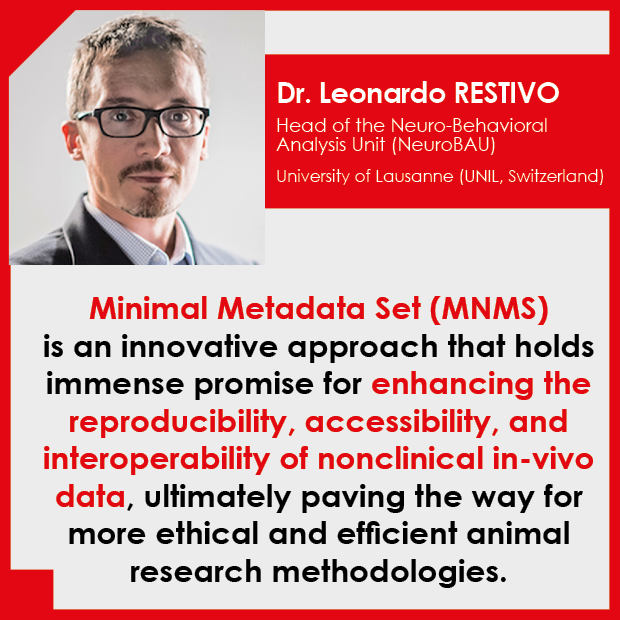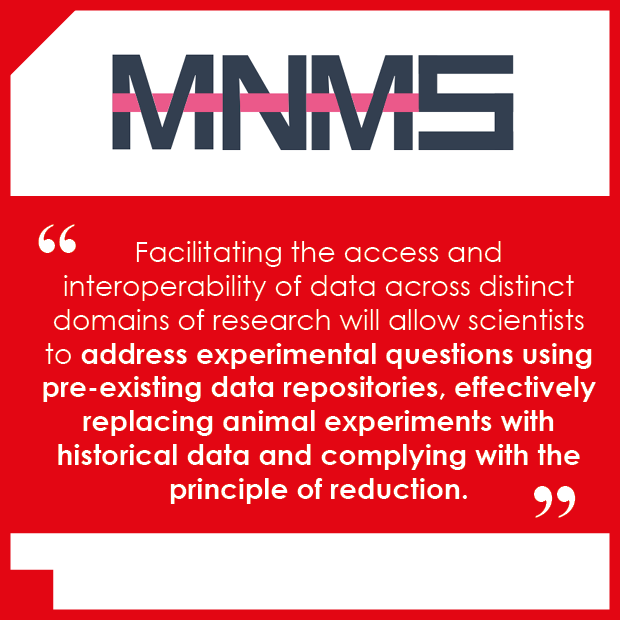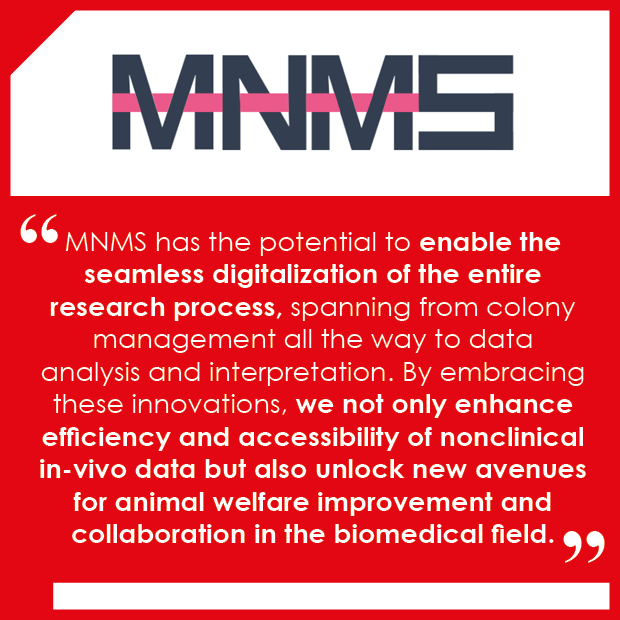
The current version of the Tecniplast website doesn't match your region. Please visit your local website to find information and offerings specific to your country.

The current version of the Tecniplast website doesn't match your region. Please visit your local website to find information and offerings specific to your country.


Today, Stefano Gaburro, Tecniplast Scientific Director, meets Dr. Leonardo Restivo, a pioneering researcher in the field of neurobehavioral analysis and a fervent advocate for ethical and transparent scientific practices.
As the head of the Neuro-Behavioral Analysis Unit (NeuroBAU) at the University of Lausanne, Dr. Restivo has spearheaded a groundbreaking initiative known as the Minimal Metadata Set (MNMS).
This innovative approach holds immense promise for enhancing the reproducibility, accessibility, and interoperability of nonclinical in-vivo data, ultimately paving the way for more ethical and efficient animal research methodologies.
In this insightful interview, we delve into the transformative potential of MNMS adoption, exploring its far-reaching impacts on data sharing challenges, fostering a cultural shift towards transparency within the scientific community, and leveraging technological advancements to streamline implementation.
As we navigate through the intricacies of this profound topic, Dr. Restivo shares his invaluable insights on overcoming obstacles, forging collaborative efforts, and driving the wider acceptance of MNMS across various research domains, unravelling the exciting possibilities that MNMS holds for the future of animal research and animal welfare.
LR: The widespread digitization that began over a decade ago in both public and private spheres ignited a race across various sectors, including biomedical research, to amass increasingly large volumes of data. The alluring reward to be found in this data-gathering frenzy was the possibility to extract deeper knowledge by means of new data analysis techniques and artificial intelligence. Our enchantment with data further pushed us to develop new techniques and new devices to gather even more data.
Now that we are finally there - as of today, nonclinical in-vivo biomedical research is experiencing an overflow of data - and that new AI tools are emerging more powerful than ever, we realize that most of our data are not findable, not accessible, and not interoperable. In one word: unusable.
Despite the emergence in the past of distinct initiatives to improve the collection (PREPARE checklist), reporting (ARRIVE guidelines) and storage (FAIR principles) of data, compliance with these guidelines is still too low. Indeed, in this context of undervalued, underexploited nonclinical in-vivo data, animal welfare issues loom large.
 MNMS is an approach that has the potential to break this vicious data-dependent cycle by supporting an improved and interoperable representation of the raw data already at the source (i.e. at the level of raw data of the single animal).
MNMS is an approach that has the potential to break this vicious data-dependent cycle by supporting an improved and interoperable representation of the raw data already at the source (i.e. at the level of raw data of the single animal).
Facilitating the access and interoperability of data across distinct domains of research will allow scientists to address experimental questions using pre-existing data repositories, effectively replacing animal experiments with historical data. Providing access to control groups across multiple research sites will support the adoption of virtual control groups.
The effective integration and repurposing of existing nonclinical research data will reduce the number of redundant experiments, complying with the principle of reduction. Moreover, improved, more extensive meta- and historical-data- analyses will help us refine the procedures adopted for animal experimentation.
Taken together the MNMS approach incorporates three important components of the nonclinical in-vivo research data cycle: preparation, reporting, and storage of the collected data. By covering all these aspects through the adoption of the MNMS approach we ensure the transparency, robustness, and reproducibility of nonclinical in-vivo data. Finally, MNMS extends the utility of data beyond the research domain in which it has been generated thus limiting the use of animals in research.
LR: MNMS is a metadata scheme that captures a large portion of nonclinical in-vivo research data, but it cannot cover the entire experimental space. However, MNMS can be used as a scaffolding structure to incorporate more complex (or domain-specific) metadata. A key component for the success of MNMS approach is pre-specification: the metadata scheme must be designed before the data repository is put in place. This preparatory stage is what allows MNMS to be future-proof. MNMS-based data repositories must enable future researchers to address questions using historical data (acquired today) by harnessing the technology of the future. Even though we cannot conceive yet the full range of questions that may be addressed 10 years from now, most of the biomedical questions that may arise in the future are likely to be constrained by biological parameters that we know will not change in 10 years (e.g. locomotor activity, cardiovascular parameters, circadian activity …). Therefore, we can - and we should! - think ahead and plan the MNMS scheme that will allow us to address future questions. This is a good research practice that is bound to increase both transparency and reproducibility.
Data repurposing is already happening in the context of home cage monitoring. A recent peer-reviewed paper (Fuochi, S., Rigamonti, M., Raspa, M., Scavizzi, F., de Girolamo, P., & D’Angelo, L. (2023). Data repurposing from digital home cage monitoring enlightens new perspectives on mouse motor behaviour and reduction principle. Scientific Reports, 13, 10851. https://doi.org/10.1038/s41598-023-37464-8) exploited an integrated home cage monitoring solution (DVC®, Tecniplast) to address novel experimental questions on animal welfare using historical data. Adoption of MNMS would enable similar studies on a global scale by leveraging data collected across multiple core facilities, further expanding the range of questions to be addressed and improving the external validity of the results.
Concerning legal implications for sharing data, some efforts are needed to align legal frameworks across countries, institutions, and sectors (i.e. public and private). Luckily, the open data initiative is not new, and it is being embraced by several of the stakeholders that we think are key for MNMS’ success (e.g. scientists, universities, publishers, regulatory bodies). The key point of MNMS is to support a decentralized storage of resources (i.e. raw data) accessible world-wide. Data owners will use their own data repository (under their own local regulations) and MNMS is used as the lingua franca enabling the cross talk between data repositories scattered across the world. The legal framework will need to be adapted to address concerns of proprietary information, embargo, and proper intellectual attribution. It will be necessary to provide improved training for researchers, core facility heads, and data managers on data-sharing principles, data licensing, and intellectual property. Regulated exchange of information in the context of commercial interests and intellectual property must be envisioned between pharma companies. One possible solution is to allow data transactions for control data, limiting transaction of GMO data or animal treated with proprietary compounds. An exemplary commitment to share data and to freely cooperate between multiple private and public parties is provided by the eTRANSAFE consortium. This was an initiative to enhance translational safety assessment during the drug development process through data integration, information sharing, standardization, and annotation in the context of competing organizations.

LR: The core value of MNMS may also be its most difficult goal to attain: engagement and full commitment of multiple stakeholders. The stakeholders here are scientists, facility managers, publishers, IT managers, policy makers, and regulatory bodies. Each one of them must be onboard to enable a seamless exchange of data on a global scale. Moreover, the scaffolding metadata scheme (MNMS) that we propose must be agreed upon, further developed, and harmonized across multiple biomedical domains.
From the point of view of scientists and facility managers, the extra administrative burden that may come with metadata compliance must be avoided at all costs. Seamless adoption of MNMS requires minimal invasiveness in the already busy practice of researchers. MNMS should be framed as a mechanism embedded in the data collection process. Tagging and data curation must be streamlined and integrated with the gestures and activities that are already in place in research laboratories and animal facilities. This, in my opinion, is the solution that has the best chance of finding support among this group of stakeholders.
Once MNMS is integrated into the research process, the next step is to openly share the data. I think that we - as an academic community - are (almost) ready to embrace open data. I see a growing number of initiatives supporting rigor and open data in science, and all of them are led by young researchers, PhDs, and postdocs. In my opinion, it may take no more than one generation of new scientists to fully embrace the open data initiative. We must be ready for that with the fitting data-sharing infrastructure and MNMS offers an unprecedented commitment towards open data. We made it very clear in the paper that we are not proposing a naïve “let’s open the gates” approach: we are well aware of the legal hurdles associated with data sharing, but as stated before, the milieu is ready to accept and nurture a MNMS approach on a global scale.
Additional strategies to encourage the adoption of MNMS include conducting collaborative pilot experiments. These experiments aim to illustrate to researchers the tangible benefits of MNMS in terms of enhancing data quality, robustness, result validity, and ultimately improving animal welfare. Publishers have a significant influence on data producers (i.e. researchers), so journals may require that raw data are stored in MNMS-compliant repositories upon acceptance for publication. Finally, regulatory bodies and policy makers are a critical player in the adoption of MNMS. Examples of actions to be taken are enforcing MNMS standards for data repositories, providing training and support for IT workers and developers, funding multidisciplinary actions and consortia to develop frameworks and data repositories that are MNMS-compliant.
LR: A critical step in further developing the MNMS is to gather more ample consensus around a minimal set of metadata. What we envision is the funding of consortia and actions with workgroups dedicated to understanding the core structure of the MNMS and its generalizability across domains. These panels of experts should be diverse, incorporating ideas and feedback from different biomedical disciplines, IT, and data science communities.
Ontologies and controlled dictionaries are a central tenet of the MNMS framework, enabling the interoperability of raw data across various domains. However, there remains a pressing need for ongoing efforts to both enhance existing ontologies and fill the gaps by developing new ones. This continued development is essential to ensure comprehensive coverage and effectiveness in representing the vast array of parameters encountered in nonclinical in-vivo biomedical research. By expanding and refining these ontologies, MNMS can effectively support seamless data integration and interoperability, thereby advancing the accessibility and repurposing of research data.
We should be prepared to give access to nonclinical data to companies that have the expertise to work with big data. Along these lines, preferential channels and collaborations should be established between academia and industry. Such partnerships can harness the complementary strengths of both sectors, driving advancements in data management, analysis, and utilization within the MNMS framework. Cross-sector communication is vital for the success of MNMS on a global scale, as it enables the exchange of knowledge, resources, and best practices, ultimately supporting the collective effort towards enhancing research data accessibility and interoperability.
LR: We must be prepared to change the way we run experiments. The nostalgic view of a scientist working in the quiet comfort of their local institute is already over: modern research is now run on a global scale. However, what is envisioned by MNMS is on a completely different scale. Thanks to MNMS, experiments may be run virtually and synchronized across time zones by analyzing historical data. Virtual control groups can be formed and integrated in the context of a traditional experiment. We need training in novel data analysis techniques and advanced statistical models.
We will drop the excessive attention towards internal validity (i.e. internal consistency of the local experiment) to favor external validity (i.e. probing the effect of our treatment on larger, more diverse samples, providing more generalizable and translatable results).
What fascinates me about the latest developments in AI is not just the high quality of the responses generated by Large Language Models, but rather their ability to “understand” the questions posed to them. The possibility to build well-formed, effective queries using natural language has the potential to be a disruptive technology, enabling the seamless exploration of complex data repositories.

The integration of natural interaction with AI, combined with the emergence of low-code/no-code solutions, promises to democratize technology access, even in traditionally overlooked settings like animal facilities.
MNMS has the potential to enable the seamless digitalization of the entire research process, spanning from colony management all the way to data analysis and interpretation. By embracing these innovations, we not only enhance efficiency and accessibility of nonclinical in-vivo data but also unlock new avenues for animal welfare improvement and collaboration in the biomedical field.